
What am I watching: the performance or the performer?
A critical essay on a strong individual’s exploration inside the dance world – written August 21, 2011 by Jess Pillmore, Co-Artistic Director of Creatively Independent
When I think of stunning contemporary dancers, or performers in general, a few come to mind quickly: Mikhail Baryshnikov, Martha Graham, Judith Jamison, Savion Glover and Sylvie Guillem. All had the reputation for being both muse and diva; motivating and challenging; loved and gossiped about. All had amazing talent discovered in themselves at an early age, a drive to work that talent into an art and the ambition to show it to the world no matter who said they shouldn’t or couldn’t. And thought each of these artists, and many others, had their own unique path to their fate, I am drawn to the dilemma of Sylvie Guillem’s artistic life. In a 1993 documentary I viewed on BBC, she reveals how she became the individual she is while the film shows how others perceive her artistry or ego. This raises a question for me, in many art forms, but ever clear in the dance world – am I watching the performance or the performer?
Watching an excerpt of her White Swan performance of Marisu Petipa and Lev Ivanov’s Swan Lake, I found myself holding my breath. She took such care and time to fully extend every moment as if it were the only moment. There was a wonderfully subtle suspension in her work. I felt that she was inside every moment while, at the same time, having the expertise to lean just a little into the future, as to not sit in the moment causing it to be stale and overdone. This is quite a balance. She took advantage of multiple focuses in the piece – her partner, the audience, the chorus, the heavens. Each point of focus had a purpose and was fully connected. I felt the presence of a performer who understood the balance of music, dance and theatre. She was making everything work towards a deeper connection to this character that at times can be caricature.
Giving a context for her journey to stardom, the documentary examines opportunities and training from the young age of eleven, when she arrived as a pupil at the Paris Opera House. She described herself as “shy but open and willing to try many things.” This openness to explore is still prevalent in her work and constant searching for cutting-edge choreographers and companies.
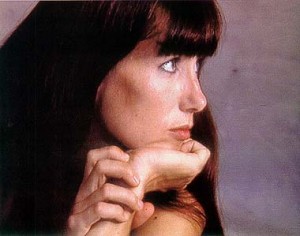
She tells a story of first day at school. The students were told that going on the roof of theParis Opera House was forbidden. And true to her current personality, the first thing she did was to find a friend to join her on the roof. Here is one of many vibrant examples of her spirit and how she reacts to what others tell her is forbidden or not possible, a common theme throughout her commentaries in the documentary. The way she presented this story instantly made me think of a common thread I have found in my psychology research on “the individual”. Dan McAdams spoke of it as “an inner story of the self that integrates the reconstructed past, perceived present, and anticipated future to provide a life with unity, purpose, and meaning.” This was clear when seeing the glee in her eyes when she retold the story for this program. It was important for her to let us know that this was how she claimed her past and her love-hate relationship the Paris Opera House and possibly dismissive authority in general.
There is a subtle, though sometimes dramatic, difference between how an artist approaches the work and how it is received others. Guillem’s process and performance history is a clear example. She speaks of her time on stage in a selfless way. Her primary drive as a young dancer was “the excitement of giving yourself to the audience on stage.” This was what made her pursue the life of a dancer. She states, “I never tried to do something special with the ‘Guillem’ idea. They always thought I did something with myself just because when I go on stage I give of myself. It sounds too simple, but I’ve never tried to analyze… I just do what my instinct tells me at that time. That is it.”
But in the eyes of others, including critics, companies and spectators, her life has been painted in a very self-centered light. Clement Crisp, dance critic for UK’s The Financial Times, said, “I think that Mademoiselle Guillem constantly needs to impose herself physically upon the role, so that everyone knows that it is she Sylvie Guillem performing the role and not anyone else. It’s a matter of those extraordinary extensions, the legs zipping past the ear – which are quite unnecessary and sometimes wrong for the choreography.”4
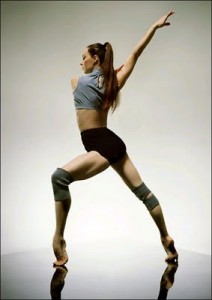 It feels like a double-edged sword. That which makes her stand out as a consummate performer and technician also makes her stand out, period. There seems to be a social need to have the superstar in your midst and yet not to be completely outshined by them. Dance critic for The Times (London), John Percival, states what many are overlooking when they attack Guillem’s technical prowess on stage. “It’s not as if she was the first to introduce this in British ballet. If you look at photographs of British dancers, even before she arrived on the scene, you’ll see even they are all trying to kick their leg as high as she is. It’s just that she is the one with the physical ability to do it best, and to do it most impressively and to make the audience watch it.” 5
It feels like a double-edged sword. That which makes her stand out as a consummate performer and technician also makes her stand out, period. There seems to be a social need to have the superstar in your midst and yet not to be completely outshined by them. Dance critic for The Times (London), John Percival, states what many are overlooking when they attack Guillem’s technical prowess on stage. “It’s not as if she was the first to introduce this in British ballet. If you look at photographs of British dancers, even before she arrived on the scene, you’ll see even they are all trying to kick their leg as high as she is. It’s just that she is the one with the physical ability to do it best, and to do it most impressively and to make the audience watch it.” 5
What I notice about her controversy is also a paradoxical core of performance. Dance especially gets sucked into the idea that the choreography is the star, not the story. And Guillem’s strong focus on character challenges that older way of thinking. The story must be served through the characters, through the energy and commitment inside the choreography. She clearly states:
I think my style of acting is different because I try to take away all this superfluous gesture that doesn’t mean anything to me. When I don’t feel something on stage, I prefer not do it than something that is not comfortable. So I put it behind me and try to do it in another way. That’s why for a long time people would say, ‘She’s too cold. She doesn’t show any feeling.’ They said that because they didn’t see what they use to see. They didn’t recognize the gestures they use to see. So for them I was not expressing anything. (Sylvie Guillem)
Because her energy and character attack, combined with amazing physical ability, causes her to draw focus, it’s mistaken as usurping the choreographer or ensemble. After viewing this documentary and researching her work, I believe that she is in fact raising the bar for performance. When someone is fearless or bullheaded enough to do this, it will, for a while, look like they are pulling themselves out into the spotlight. This is only until someone else is willing to step up and join her. Like what choreographer Maurice Bejart said of Guillem, “Looking at her you feel you are more intelligent and more able to do things.” 6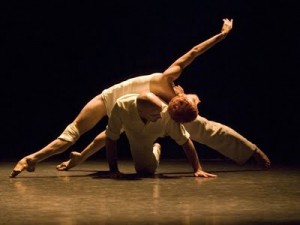
Guillem’s unique point of view makes her a commodity to fight over. In 1989, when she was 25-year old, she left the Paris Opera for London’s Royal Ballet. There was such an uproar when she left Paris that some equated it with a country giving away a national treasure. Only when The Royal Ballet visited Paris in 1993, the first time in 40 years, was Guillem welcomed back into Paris’s good graces. She was given the honor of Freedom of the City.
A truly individualistic artist usually breaks ground in many ways. Guillem was no exception. At the age of 18, Rudolph Nureyev singled Guillem as a soloist in the Paris Opera Ballet. She instantly became the youngest top-ranking female company member in their history. When she left Paris Opera Ballet for London’s Royal Ballet, it was as a freelancer dancer, also unheard of. She still works today without a manager or agent, booking her own contracts, rehearsals and performances around the globe. She searches for cutting edge choreographers in ballet and contemporary dance, pushing the boundaries of what she can physically and artistically do.
These are all beautifully rebellious acts of a sure-footed individual. Like the little girl going up on the Paris Opera House’s roof, she defies anyone who tells her no just because. Guillem says she left Paris because, “I felt like a kid at Paris Opera asking permission to ‘please can I go to dance with NYC Ballet?’ ‘Can I go to dance with ABT?’ And they would sometimes say, ‘No you can’t.’ ‘Why?’ ‘Because.’” They told her she wouldn’t have the courage to leave, but she says, “I did have the courage to leave. They were quite surprised.” 7
As a freelance artist, she has found an outlet to keep trying new things and not be held to the standards or regulations of another, for who could know what she needs as an artist or a performer more than her? There are reasons why many don’t go it on their own though, and the rigor of her life shows why. She must have an amazing work ethic, a need to be challenged, an ability to feel cutting-edge trends and find the next wave of creative exploration. She can also never sit back in who she is now, her gift, her hype, her stardom as she stated in the South Bank documentary, “I am not like this just because it was a gift. I was a kid with a gift. I admit, but I worked a lot. And this is difficult for everybody to work. And it’s also difficult, when you have gift to know that you have to work and understand it because it’s easy to just stop where you are and use the gift you have. Doesn’t give good things in the end. You must use all of that.” Anthony Russell-Roberts, Administrative Director of The Royal Ballet, spoke highly of her determination and, sometimes, isolated process. “She does approach each performance with meticulous preparation. You see her as early as she possibly can quietly warming up… She builds herself quietly until the curtain goes up in a very self contained, private way. It’s rather as if she’s in her own world.” 8
Her work with contemporary choreographers is what sets her apart from other dancers. This is a common theme with many cutting-edge artists, including Mikhail Baryshnikov and his famous, or infamous, cross over to contemporary dance. When Guillem worked with Swedish choreographer, Mats Ek, on Wet Woman, she spoke of her need to look at contemporary choreographers to balance her ballet training:
You use your body in a different way, so you have to break all of what you know and go somewhere else. It’s very difficult. Classical ballet is always on balance. You have your legs straight and your back straight, arms are always very well placed. But in this language [contemporary dance], you don’t. It’s very good when it becomes dangerous, when it starts to become dangerous, so you are always on the edge. (Sylvie Guillem)
Choreographers reap great rewards working with such a driven individual as well. While working on Maurice Bejart’s solo, SISSI, about a deranged woman who may or may not be the empress of Austria, Bejart remarked, “I have never seen anyone like Sylvie to pick up steps so fast. Sometimes I create and sometimes I just have to follow feelings, breathing, the color of her skin, the brightness of her eyes, the movement of her hair. All the inspiration is coming from the subject. It’s like a ping pong between her and me.” 9 This is the ultimate collaboration between choreographer and dancer, director and actor, composer and musician. When one gives themselves to the piece freely with full force, they are contributing to the creation beyond that of a puppet. Everyone thrives in this and no one holds back. Work flows faster and new opportunities present themselves.
 Sylvie Guillem’s path shows me that when an artist raises the bar, raises the expectation within themselves, they will inspire and raise the bar for others… or allow them the opportunity and inspiration to do it themselves. It is bound to be misinterpreted, as all things are. It is bound to be pull on and weighted by those who haven’t achieved such freedom of expression for themselves. But these reasons should not taint a full-fledge performance. These reasons should not make us question how we feel in the moment of watching someone, like Guillem, harness a moment of fragile perfection. Guillem shows the difference between watching one who is self serving in a performance and one who is giving of themselves to serve the performance.
Sylvie Guillem’s path shows me that when an artist raises the bar, raises the expectation within themselves, they will inspire and raise the bar for others… or allow them the opportunity and inspiration to do it themselves. It is bound to be misinterpreted, as all things are. It is bound to be pull on and weighted by those who haven’t achieved such freedom of expression for themselves. But these reasons should not taint a full-fledge performance. These reasons should not make us question how we feel in the moment of watching someone, like Guillem, harness a moment of fragile perfection. Guillem shows the difference between watching one who is self serving in a performance and one who is giving of themselves to serve the performance.
1 Sylvie Guillem, The South Bank Show (BBC, London, 1993) Television.
2 McAdams, D.P., The Stories We Live By: Personal Myths and the Making of the Self (NewYork: Guilford Press, 1993) P.266
3 Sylvie Guillem, The South Bank Show (BBC, London, 1993) Television.
4-9 Ibid.
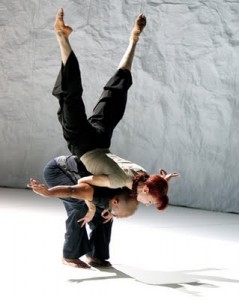 [fblike]
[fblike]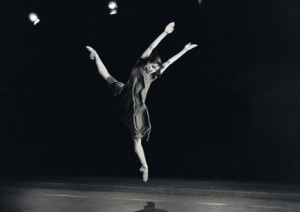
Comments: 2
I am studying to be a ballet teacher and writing my thesis on creativity in ballet. I’d like to cite this article but cannot find the necessary details i.e author. Could you help?
Hi AJ, Thanks for writing. I am the author – Jess Pillmore. I’ll start to include that in the blog posts. It was originally written Aug. 21, 2011 and published here online Sept. 9, 2011. The blog source is my company’s website – creativelyindependent.net
Hope this was helpful. Let me know if you need anything else.
~ Jess
Comments are closed.